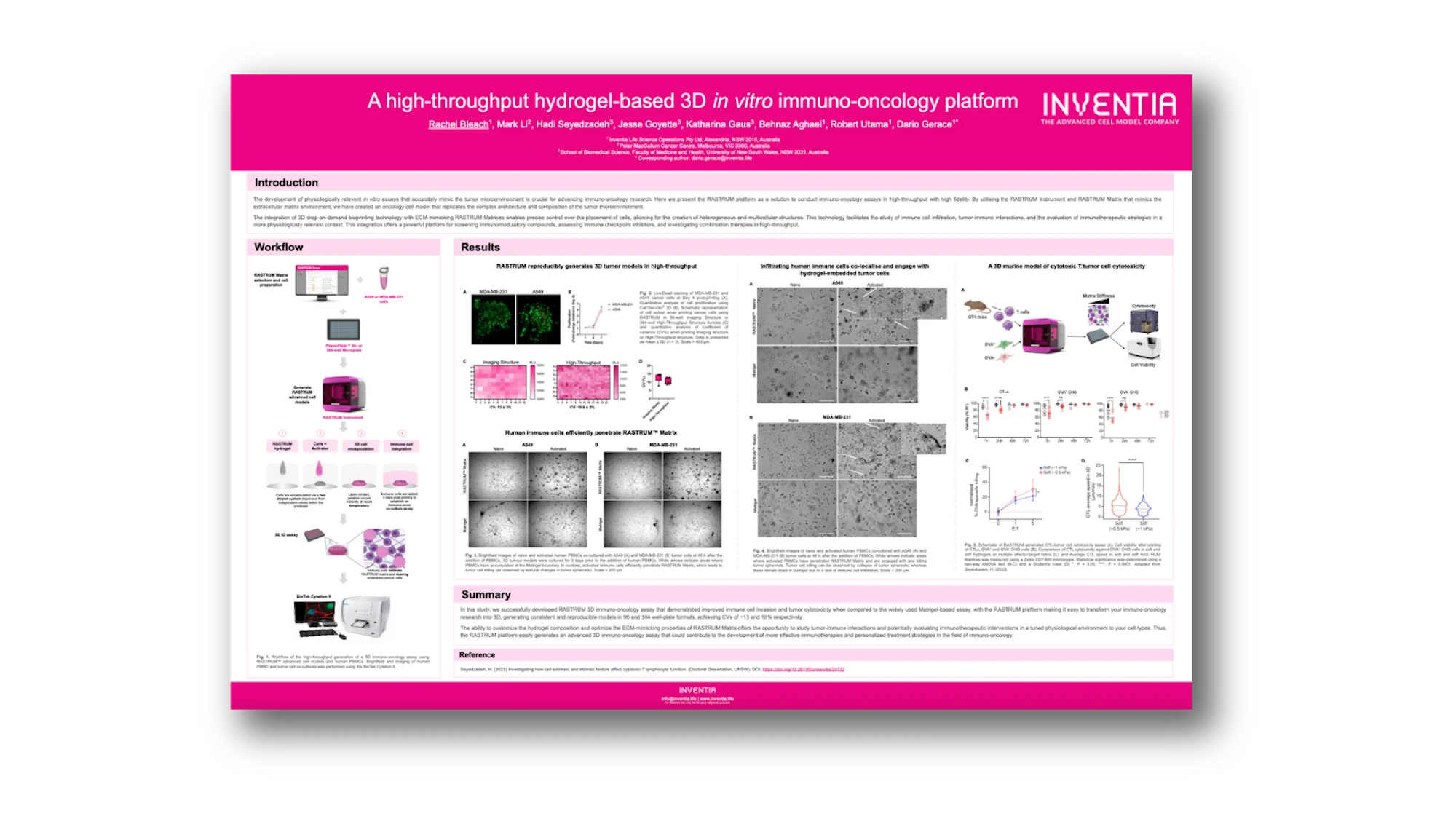
A high-throughput hydrogel-based 3D in vitro immuno-oncology platform
Presented at European Association for Cancer Research (EACR) 2023 Congress: Innovative Cancer Science
Abstract
Introduction
Advanced three dimensional (3D) cell culture techniques have been adopted in many laboratories to better model in vivo tissue by recapitulating multi-cellular architecture and the presence of extracellular matrix features. Here, we demonstrated an immuno-oncology assay application using 3D cell cultures generated with the RASTRUM™ Platform.
Material and method
3D cell culture of both breast (MDA-MB-231) and lung (A549) cancer were generated using either the RASTRUM™ Platform (Inventia Life Science) and RASTRUM™ Px02.28P or Px01.28 matrices (Inventia Life Science) or manually-encapsulated in 7 mg/mL Matrigel (Corning). The printing design was prepared using RASTRUM™ Cloud Software (Inventia Life Science). 3D tumour cell models were then cultured for 3 days prior to the addition of both activated (CD3/CD28 T cell activator) and non-activated HLA-mismatched peripheral blood mononuclear cells (PBMCs). Infiltration and co-localisation of immune cells with tumor cells in 3D cell models was analysed by brightfield microscopy
Results and discussion
We used MDA-MB-231 and A549 cancer cells in the most physiologically relevant RASTRUM™ matrices and tested their compatibility with an immuno-oncology application using PBMCs. We showed that both cancer cell lines when prepared using the RASTRUM™ Platform and RASTRUM™ Matrices proliferated and remained viable during the culture period.
We then demonstrated that relevant, activated immune cells invaded and destroyed cancer cells within RASTRUM™ Matrices more efficiently than Matrigel. Successful infiltration of the immune cells into the hydrogels was confirmed by brightfield microscopy, which showed the co-localisation of immune and cancer cells. Conversely, immune cells did not penetrate Matrigel-embedded tumor cells and accumulated at the Matrigel boundary.
Conclusion
RASTRUM™ Platform is a suitable tool to generate relevant cell models for immuno-oncology assays. The models were confirmed to facilitate the infiltration of activated T cells to kill tumors in a 3D format. The ability to study this in a matrix-embedded 3D format provides a more physiologically relevant in vitro environment than 2D or 3D suspension cultures. Furthermore, the high-throughput nature of RASTRUM™ Platform enables such an assay to be scaled to allow researchers to conduct interventional drug screens.